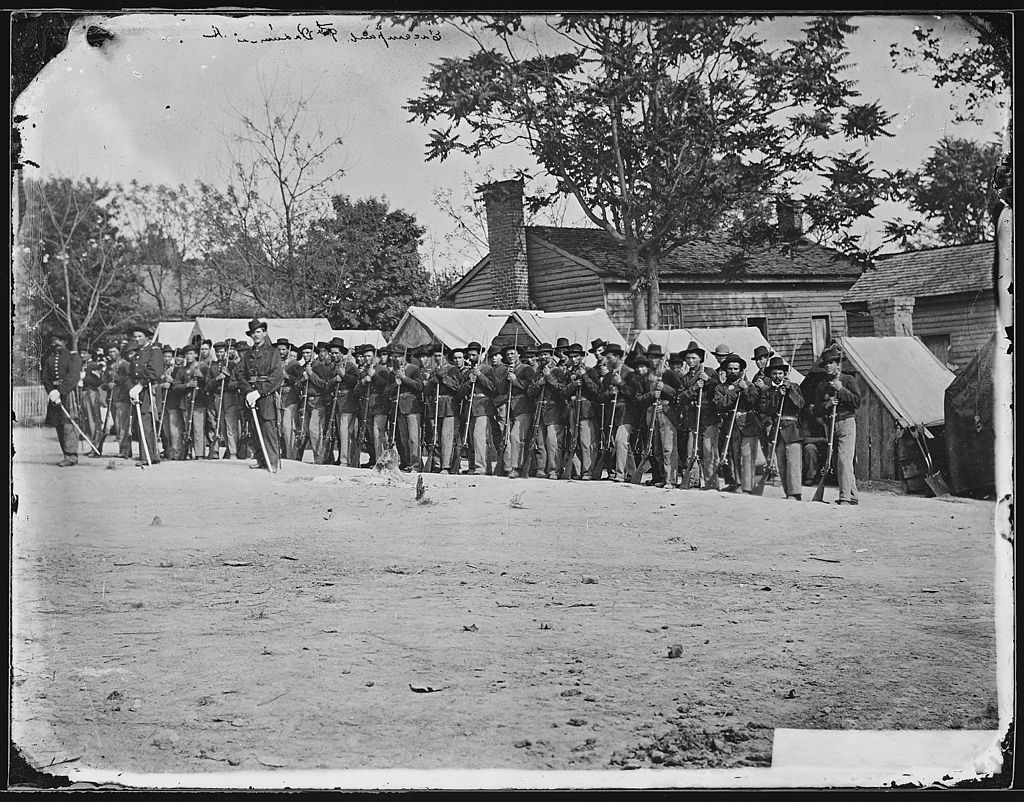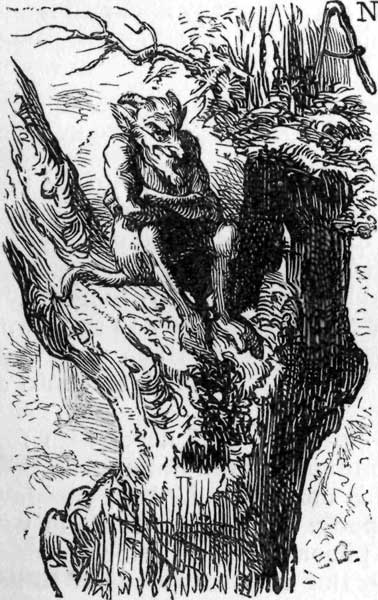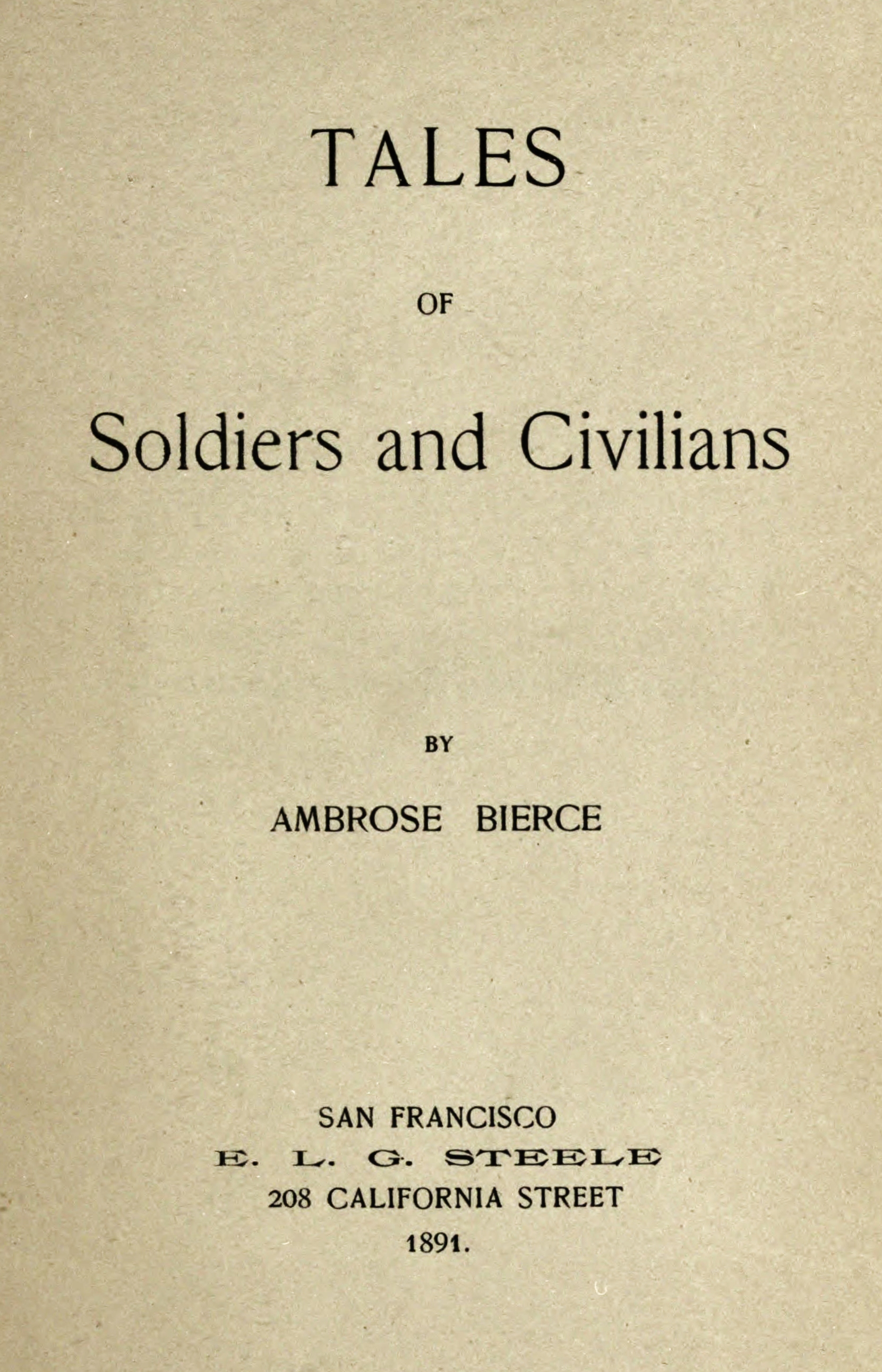
The history of American letters overflows with stories of eccentric characters, both from the pages and their authors. One particular author whose unique view of the world shaped his writings and his lifestyle was Hoosier Ambrose Bierce. Like Mark Twain, Bierce is usually associated with the San Francisco writing scene of the late-19th century. However, he spent many of his formative years in Indiana, learning about the newspaper business and ultimately enlisting in the Civil War. These early experiences not only shaped his incomparable writing style, but they influenced his distinctive views about life and religion.
Ambrose Gwinnett Bierce was born June 24, 1842 in Horse Cave Creek, Ohio. Bierce’s early life, after he and his family moved to Indiana, remains shrouded in mystery. Some sources indicate that the Bierce family moved to Kosciusko County in 1846, but it is hard to verify. Bierce reportedly lived on the family’s settlement in Walnut Creek until he was 15, when he moved to Warsaw to work as a “printer’s devil” (an apprentice tasked with multiple duties) for the Republican newspaper, the Northern Indianan. Reportedly, Bierce also traveled to Kentucky in 1859-60, learning typography at the Kentucky Military Institute.
After returning from Kentucky, Bierce reportedly lived in Elkhart from 1860-1861. At the outbreak of the Civil War, Bierce enlisted in Company C of the Ninth Indiana Regiment in April 1861 and served as a private for three months. He was promoted to Sergeant in July 1861, when he reenlisted for a three year term. His upgrade in rank came as a result of his valor during the Battle of Laurel Hill on July 10, 1861. He was wounded at Kennesaw Mountain in 1864 and eventually opted not to reenlist, mustering out in January 1865 with the rank of First Lieutenant. Bierce’s intense and often painful experiences during his service in the Civil War inspired much of his literary work, particularly his short fiction and journalism.

Bierce began his journalism career in 1867, writing poems and essays for the Californian and Golden Era, under newspaper editor James T. Watkins. From 1868-1872, Bierce wrote a local column for the San Francisco News Letter called the “Town Crier.” One critic referred to his writing as “humor [that] borders as nearly upon the blasphemous and sacrilegious as that of Swift or Sterne.” Another review considered his early works, “The Haunted Valley” and “Broke,” as offbeat pieces that showed his “capacity, acute observation, and descriptive powers of very unusual simplicity, grace, and effectiveness.”
For the next three years, Bierce lived and worked in England, under the pseudonym “Dod Grile.” The origins of his unorthodox pen name came from an 1872 letter, written by a friend and early employer of Bierce in England named Tom Hood, who addressed Bierce as “Dear God Rile.” Bierce used an anagram of it, “Dod Grile,” as a pen name while in England. As biographer Roy Morris speculates, Bierce may have chosen this simple name as a way to attract readers, same as Samuel Clemens did with “Mark Twain.”
Bierce’s columns appeared in English and American newspapers. Bierce also published three collected humor works while in Great Britain; his most successful was Cobwebs from an Empty Skull, published in 1873. Prominent advertisements and reviews in This Week’s News and Lloyd’s Weekly London Newspaper solidified their modest success.

After his time in England, Bierce returned to California and began work at the Argonaut and the Wasp and established his successful column, “Prattle.” This column gave Bierce a platform to express his views on politics, current events, literature, and history, often with a humorous slant. As an example, this short quip about a millionaire’s dining habits appeared in the March 13, 1886 issue of the Wasp:
There is a man in San Francisco—a millionaire who has revived a very ancient custom, I am told. This gentleman is rather fond of dining people at his house—mostly men. Between the courses, now and then during the meal, he introduces various uncouth monsters, whose antics are supposed to amuse and edify the guests. I am told they don’t. A friend of mine has asked me to complain of the infliction—which I willingly do, although it is not the simplest method of relief that my friend could have thought out. If he does not relish monsters with his dinner why does he not dine at home and ask to have the monsters sent over to him afterward, as a separate entertainment?
By 1898, Bierce renamed his column “War Topics” and wrote mostly of his early support and subsequent ambivalence regarding the Spanish-American War.
In 1887, he worked for newspaper magnate William Randolph Hearst at the San Francisco Examiner. Like in Britain, Bierce’s columns were nationally syndicated, in outlets like the Wichita Eagle, The Louisiana Democrat, and the Washington Herald. Even though Hearst gave Bierce nearly complete editorial freedom, a growing antagonism existed between them. This may have been due to Bierce’s disgust with some of Hearst’s other journalists, specifically after 1906. Bierce formally left the employ of Hearst in March of 1909 to focus on compiling his collected works and memoirs.
In 1891, he compiled many of his Civil War tales into Tales of Soldiers and Civilians. The book included “An Occurrence at Owl Creek Bridge,” which Hoosier satirist Kurt Vonnegut called the “greatest American Short Story.” The widely anthologized tale excellently displays Bierce’s style and grasp of the complexities of war. Film maker Robert Enrico adapted the story into an Academy Award winning short film (1963), which Rod Serling subsequently used as a Twilight Zone episode.
In this excerpt from “An Occurrence at Owl Creek Bridge,” Bierce reflects on death in war:
Death is a dignitary who, when he comes announced, is to be received with formal manifestations of respect, even by those most familiar with him. In the code of military etiquette silence and fixity are forms of deference.
Many reviewers praised the Tales of Soldiers and Civilians after its publication. A New York Tribune reviewer noted, Bierce’s stories are “elaborated pictures of what the American soldier actually experienced in the great war [Civil War].” New Orleans’ Daily Picayune called Bierce a “genius” and considered the anthology the “most noteworthy book of stories by an American writer published in ten years.”

It is somewhat fitting that an author known for his unexpected plot twists would have a surprise coda to his own life. Bierce’s mysterious disappearance in 1914 proved to be as complicated as his early years in Indiana. After his last letters to family and friends in 1913, there is only one primary source (a letter to a friend) that suggests that he went to Mexico. The other indication that he was headed that way is in letters from the fall and winter of 1913, where he repeatedly describes his future trip to Mexico. His final letter to a family member, dated November 6, 1913, notes that “I shall not be here long enough to hear from you, and don’t know where I shall be next. Guess it doesn’t matter much.” However, a letter from December 26, 1913 to friend Blanche Partington places him in Chihuahua, Mexico but the last sentence of the letter leaves it more ambiguous: “As to me, I leave here tomorrow for an unknown destination.”
Based on the evidence of this last letter, Bierce possibly went to Mexico, but as investigator Joe Nickell notes, this supposed last letter attributed to Bierce, and preserved by his daughter, is probable at best. Therefore, it is more likely that he disappeared after 1914 and that the claim that he went to Mexico is plausible but not confirmed, based on his letters from late 1913. Bierce’s “death” was as elusive as the man himself.
An Occurrence at Owl Creek Bridge and Other Stories by Ambrose Bierce is available at the Indiana Historical Bureau book shop.
Visit Part Two to learn about Bierce’s connection to 19th-century freethought.
